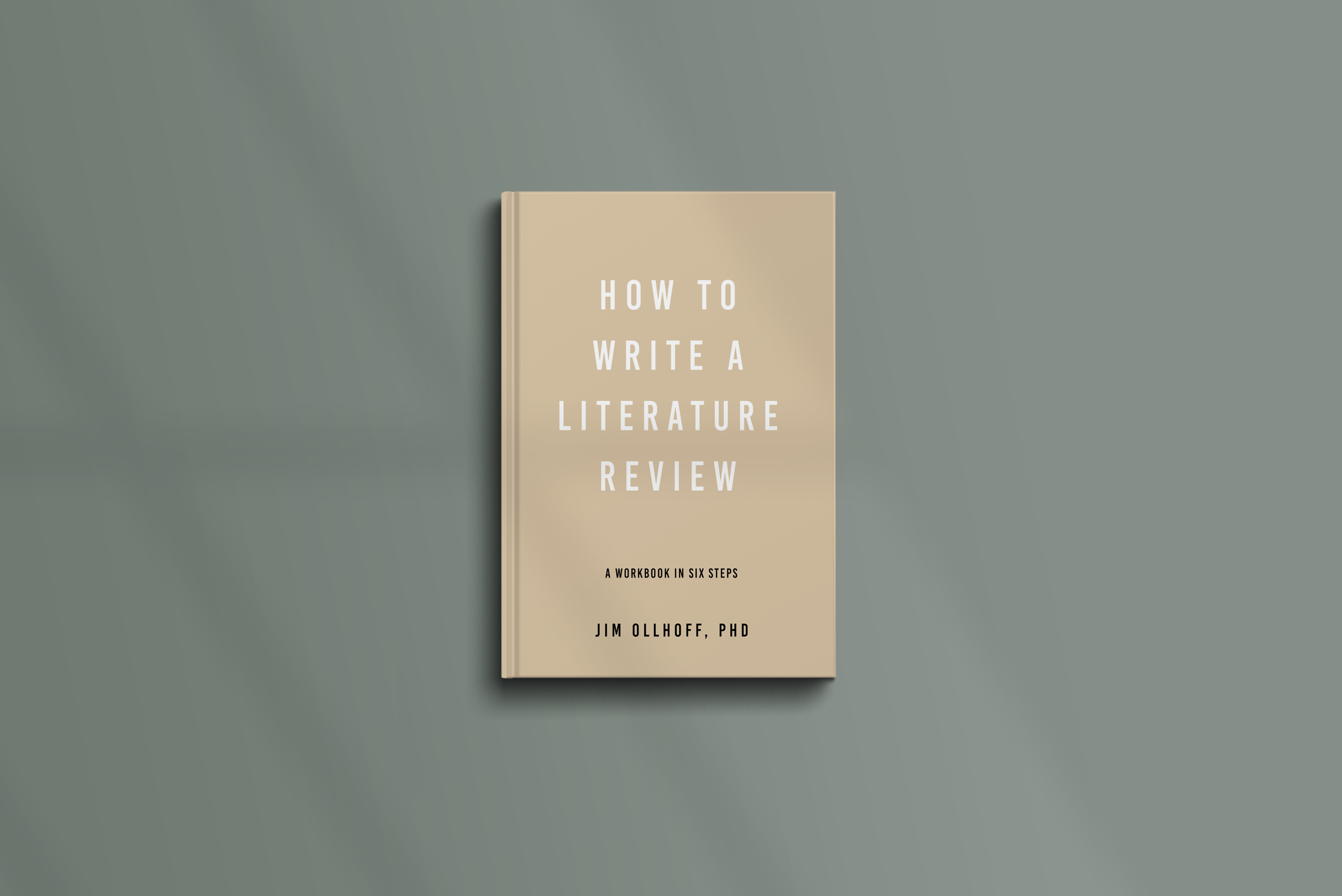How to Write a Literature Review: A Workbook in Six Steps
Workbook Description
Writing a literature review, but not sure where to start? Here’s an easy six-step format. Samples are given throughout the book so you can get a sense of the style of writing in a literature review.
-
Introduction
The Sources You’ll Use
Step 1: Choose Your Research Question
Step 2: Find and Evaluate Sources
Step 3: Immerse Yourself in the Literature
Step 4: Build an Outline
Step 5: Write Each Section
Step 6: Final Edit
And Finally…
-
Step 1: Choose Your Research Question
The first step is pretty obvious. You have to decide what to write about. Once you decide, about half the battle is over.
But we need to make a distinction between your topic and your research question. A topic is the broad topic you are studying. The research question is the narrow topic on which you are writing your literature review. From any topic comes dozens or hundreds of possible research questions.
So, your topic might be adult learning. But adult learning is too big a topic to write a lit review on. You could spend the rest of your life studying adult learning and never get to the lit review. A research question on the topic of adult learning might be, “The effects of gamification on adult education in a business setting.” Or, “What are the social and emotional forces that contribute to immigrant adults pursuing a master’s degree?”
The topic might be creativity. A research question could be, “Teresa Amabile’s contribution to the knowledge base of creativity.” Or a research question could be, “Insights of neuroscience on creativity in elementary-age children.”
The research question is tight and narrow. It’s narrow enough that there’s probably only a dozen research studies on the issue. The topic is the broad direction you’re going. The topic is what you tell your grandmother when she asks “What are you writing your paper on?” The research question is what you tell someone whom you want to impress.
A topic might start with, “Do employees enjoy meetings?” This is a great topic, but for a research question, it’s impossibly broad. Further, it’s a yes-or-no question. “Yes” or “no” would make for an awfully short literature review. Find ways to narrow it. What kind of employees? What kind of meetings? What do you mean by “enjoy”? A research question for this topic might be, “The efficacy of weekly meetings for meeting deadlines in software product development.” In that question, you’re looking at software engineers, not all people in general; you’re not looking at enjoyment, but narrowing it down to whether the meetings help or hurt in meeting the project deadlines.
Narrowing the focus from a topic to a research question is both an art and a science. If your research question is too broad, then you’ll never finish reading on the topic, and you’ll only be able to write a superficial paper. But if the research question is too narrow, then you won’t find enough literature.
When you finish Step 1, you have a research question. Write it on a piece of paper and post it on your bathroom mirror or on the side of your computer monitor.
Stuck? Try this activity: Get your topics on paper
Make a list of all the topics in which you are interested. Then pick a couple of the topics, and write a few research questions for each one. Experiment and be creative with your questions. Then pick a couple of the research questions and do a quick cursory glance of the literature to see if there is enough research available.
Stuck? Try this activity: Finding the sweet spot
Write down your research question. Take 30 to 60 minutes, and scan the available literature. Go into the library databases to see what’s available on your question. Check out Google Scholar. Don’t read the literature—just skim it. Then take an assessment. How much did you find? If you found 15 or more articles on the exact research question, then your research question is too broad. Work to narrow it. If you couldn’t find any articles, it’s probably too narrow, so you might consider making the research question a bit wider. If you found three to five articles, then it’s probably pretty close to the sweet spot (you’ll find more articles later).
Stuck? Try this activity: Just decide
Many students agonize over this first step—because they don’t want to write about the “wrong” thing. However, if you’re interested in it, it will never be wrong. Creative people have many interests, and any of those interests will probably carry you through to completion. So, if you have a few viable research questions, and you can’t decide which one to write about, then set a deadline. “I’m going to decide by 5:00 tomorrow.” Or “I’ll decide by next Monday.” Then, if you haven’t decided by Monday, flip a coin. Or write your research questions on 3x5 cards, tape them to a wall, and throw a dart. Or write the questions on small pieces of paper and draw one out of a hat. The point is, just decide. You can’t go on to the next step until you decide on a topic.
